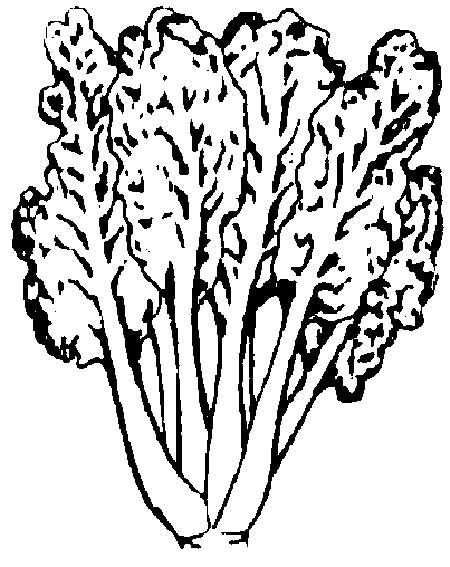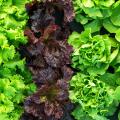Chard, Swiss
Swiss Chard

Swiss chard is a close relative of the garden beet that does not develop an edible root. Grow chard just like beets, but space the plants 4 to 6 inches apart in the row.
Harvest chard by cutting the entire plant or by removing the large outer leaves, leaving the smaller leaves to develop for future harvests. If watered, spring-planted chard may survive the summer to produce leaves for fall harvest. The green portion of the leaf can be stripped off, leaving the broad mid-rib, which can be steamed and eaten like asparagus.
There are several varieties of chard; the biggest difference among them is that some varieties have brightly colored stems. The red-stemmed varieties may be mistaken for rhubarb but cannot be used as a rhubarb substitute.
Because of its upright growth and large, attractive leaves, chard can be used as an ornamental in borders and display beds.
Varieties
- Bright Lights—red, yellow, purple, and green petioles.
- Lucullus—early; leaves crumpled; dark green; broad, pale-green petiole.
- Rhubarb—crimson stalks; leaves dark green; heavily crumpled.
Publications
News
Vegetable producers across the Southeast are invited to the 2025 Vegetable Field Day on July 23 at the Mississippi State University station in Verona, Mississippi.
If you grow your own vegetables, you will likely see at least a few pesky insects that want to feed on your plants. Slugs are one of the pests you may be noticing now.
Did you know yellow squash is in the pumpkin family and are 95 percent water?




